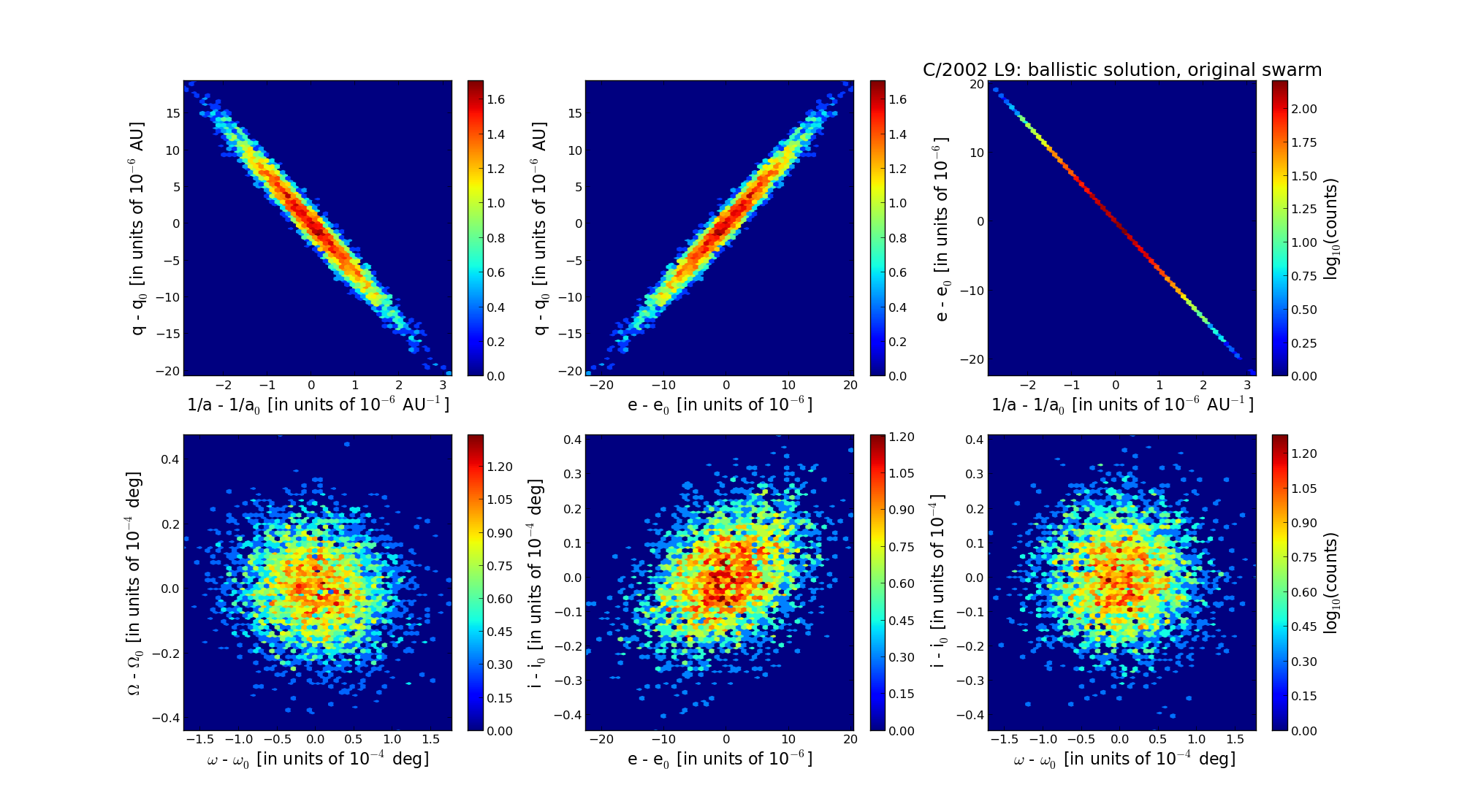| Solar System Dynamics & Planetology Group |
 |
C/2002 L9 NEAT |  |
| Solar System Dynamics & Planetology Group |
 |
C/2002 L9 NEAT |  |
| number of observations | 323 |
| number of residuals | 634 |
| data interval | 2002 June 6 — 2007 Jan. 11 |
| rms [arcsec] | 0.49 |
| orbit quality class | 1a+ |
| Epoch (TT) | 20040425.0 | = JD 2453120.5 |
| time of perihelion passage (TT) | 20040406.052495 | ± 0.000771 |
| perihelion distance | 7.03303845 | ± 0.00000591 |
| eccentricity | 0.99850170 | ± 0.00000615 |
| argument of perihelion [deg] | 231.431509 | ± 0.000050 |
| longitude of the ascending node [deg] | 110.457237 | ± 0.000011 |
| inclination [deg] | 68.445540 | ± 0.000011 |
| inverse semimajor axis [10-6 au-1] | 213.04 | ± 0.88 |

| Epoch (TT) | 16950224 | |
| time of perihelion passage (TT) | 20040405.561118 | ± 0.000769 |
| perihelion distance | 7.03551955 | ± 0.00000600 |
| eccentricity | 0.99974285 | ± 0.00000627 |
| argument of perihelion [deg] | 231.448525 | ± 0.000050 |
| longitude of the ascending node [deg] | 110.454062 | ± 0.000011 |
| inclination [deg] | 68.399334 | ± 0.000011 |
| inverse semimajor axis [10-6 au-1] | 36.55 | ± 0.89 |
| Epoch (TT) | 23131023 | |
| time of perihelion passage (TT) | 20040406.791856 | ± 0.000764 |
| perihelion distance | 7.03670088 | ± 0.00000604 |
| eccentricity | 0.99945273 | ± 0.00000627 |
| argument of perihelion [deg] | 231.480567 | ± 0.000050 |
| longitude of the ascending node [deg] | 110.436611 | ± 0.000011 |
| inclination [deg] | 68.407644 | ± 0.000011 |
| inverse semimajor axis [10-6 au-1] | 77.77 | ± 0.89 |